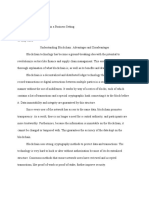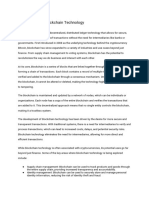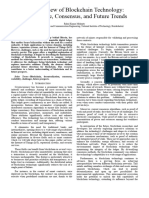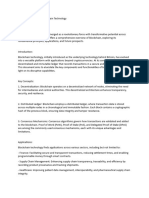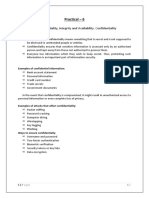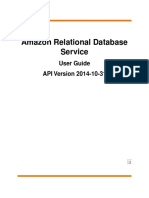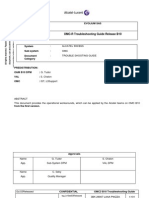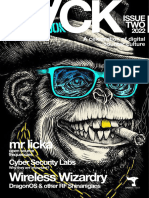0% found this document useful (0 votes)
23 views14 pagesBlockchain Technology
Blockchain technology is a decentralized and secure system that can transform various industries by enabling trustless transactions and eliminating intermediaries. Key features include transparency, immutability, and enhanced security, with applications in finance, supply chain, healthcare, and governance. However, challenges such as scalability, regulatory compliance, and education must be addressed for widespread adoption and to unlock its full potential.
Uploaded by
sufiasafdar999Copyright
© © All Rights Reserved
We take content rights seriously. If you suspect this is your content, claim it here.
Available Formats
Download as PDF, TXT or read online on Scribd
0% found this document useful (0 votes)
23 views14 pagesBlockchain Technology
Blockchain technology is a decentralized and secure system that can transform various industries by enabling trustless transactions and eliminating intermediaries. Key features include transparency, immutability, and enhanced security, with applications in finance, supply chain, healthcare, and governance. However, challenges such as scalability, regulatory compliance, and education must be addressed for widespread adoption and to unlock its full potential.
Uploaded by
sufiasafdar999Copyright
© © All Rights Reserved
We take content rights seriously. If you suspect this is your content, claim it here.
Available Formats
Download as PDF, TXT or read online on Scribd
/ 14















